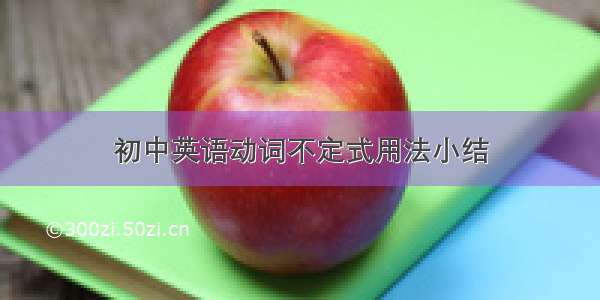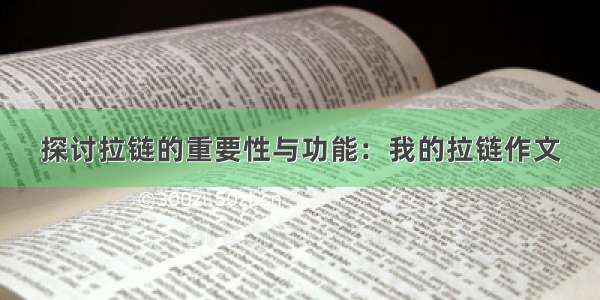
初中英语动词不定式用法小结
动词不定式是动词的一种非谓语形式,又叫非谓语动词,它没有人称和数的变化,在句子中不能做谓语;它由“to+动词原形”构成,这里的to是动词不定式符号,本身没有词义,其否定形式常在to前加not;由于它仍保持动词的特点,可以有自己的宾语和状语,还可以带疑问词和由for引出其逻辑主语等形成动词不定式短语;不定式或不定式短语具有名词、形容词和副词的特征,在句子中可作主语、表语、宾语、宾语补足语、定语和状语等句子成分。为使同学们更好地掌握其用法,现总结如下:
一、动词不定式作主语
动词不定式作主语时,为避免句子的头重脚轻,常用it作为形式主语,而真正的主语动词不定式后置。如要说明动作的执行者,可在不定式前加for引导的短语;但如果表语是nice, kind, clever等描述动作执行者的性格、品质的形容词时,则应在不定式前加of引导的短语。常用句型:It +be+adj./n.+(for/of sb.) to do sth./It takes sb. some time to do sth.
二、动词不定式作宾语
一些动词,如want, decide, hope, ask, agree, choose, learn, plan, need, teach, prepare,等,常接动词不定式作宾语。当动词不定式作宾语时,如果后接宾语补足语,常用it作形式宾语,而把真正的宾语放在宾语补足语之后。应注意有些动词后面可接不定式作宾语,也可接动名词作宾语,但所表达的意义不同。常见的有:(1)stop to do sth.停止正在做的事,去做另一件事;stop doing sth. .停止正在做的事(2)go on to do sth.做完一件事后,继续做另一件事;go on doing sth.继续做同一件事(3)remember/forget to do sth.记住/忘记去做某事;remember/forget doing sth.记得/忘记做过某事
三、动词不定式作定语
动词不定式作后置定语时,与被修饰的名词逻辑上有动宾关系。如果动词不定式是不及物动词时,则要带上与之搭配的介词,构成及物动词短语。动词不定式作后置定语常用于“have/has+某事+to do”或“enough+名词+to do”“It’s time to do sth.”等结构中。
四、动词不定式作宾语补足语
有些动词,如tell, ask, want, invite, teach, like, call等可接带to的动词不定式作宾语补足语,构成tell/ask/want /call/invite sb. to do sth.结构。应注意动词不定式作使役动词和感官动词的宾语补足语时应省去to,在被动语态中应加上to。这些动词可归纳为“一感(feel),二听(listen to, hear),三让(let, make, have,,四看(look at, see, watch, notice),半帮助(help)(即在动词help后面作宾语补足语时,to可有可无)”。另有口诀帮助记忆:“感使动词真奇怪,to在句中像妖怪,主动句中to离开,被动句中to回来。”(let不用于被动语态)
五、动词不定式作状语
动词不定式作状语主要用来修饰动词,表示目的,结果或原因。为了强调目的,有时可以把动词不定式放在句首,或在不定式前加in order或so as。常用结构有too + adj./adv. + to dosth.等。
六、固定句式中动词不定式的用法
在固定句式中对不定式的考察常见的有:had better (not) do sth./Would you like to do sth.?/Why not do sth.?/Would you please (not) do sth.?等。
动词不定式专项训练题:
一、单项选择。
1. _______ is difficult to work out the maths problem.
A. ThisB. ThatC. ItD. Its
2. We decided _______ at the end of this month.
A. travelB. not start outC. to leaveD. going
3. They have no paper_______.
A. to writeB. to write withC. write onD .to write on
4. Let him _______ a rest. I think he must be tired after the long walk.
A. hasB. haveC. to haveD. having
5. _______the computer is a problem.
A. How to useB. What to useC. Where to useD. Which to use
6. The teacher told us _______in bed.
A. don’t readB. read notC. to not readD. not to read
7. The old man was _______angry _______ say a word.
A. so, thatB. as, asC. too, toD. very, to
8. Why _______home tomorrow?
A. not goB. not goingC. not to goD. didn’t go
9. The TV set is too loud. Will you please _______?
A. turn down itB. turn it downC. to turn it down D. to turn down it
10. It’s cold outside. You had better _______ your coat.
A. to put onB. putting onC. puts onD. put on
二、用所给动词的正确形式填空。
1.It took half an hour _______(get) to theWorldParkfrom Kitty’s school.
2. It was interesting _______(see) so many places of interest from all over the world.
3. They want _______(save) time by using shorter words and phrases.
4. Kitty’s classmate Daniel taught himself how _______(make) a home page.
5. Things _______(do) inBeijing
6. He put his photos on it for everyone _______(look) at.
7.Help him _______(put) the photos in the correct order.
8. He made the girl _______(cry) yesterday.
9. It’s time for class. Please stop _______(talk).
10. I’d like _______(go) to theTempleofHeaven.
参考答案:
一、1—5 CCDBA6—10 DCABD
二、1. to get2. to see3. to save4. to make5. to do
6. to look7. (to)put8. cry9. talking10. to go
初中英语巧变宾语从句
—宾语从句“三个三”(三种类型、三个步骤和三点注意)
初三同学复习宾语从句,应抓住关键。如果掌握了以下三点,定会收到事半功倍的效果。
一、三种类型
宾语从句一共有三种类型:
1.that引导的宾语从句(陈述句变宾从)。
如:He said (that) it was Sunday yesterday.
2.if/whether引导的宾语从句(一般疑问句、选择疑问句和反意疑问句变宾从)。
如:Could you tell me if /whether there will be a test next week?
3.when, which等连接代词或连接副词(特殊疑问词)引导的宾语从句(特殊疑问句变宾从)。
如:I don’t know how I can get there.
二、三个步骤
变宾语从句应遵循以下三个步骤:
1.确定引导词
根据从句的句子类型选择正确的引导词:如从句为陈述句则引导词为that(that在口语中常省略);如从句是一般疑问句、选择疑问句或反意疑问句,则引导词为if或whether;如从句是特殊疑问句,则引导词为特殊疑问词本身。
2.调整语序
宾语从句永远是陈述句语序。如原句是疑问句,则应调整为陈述句语序。
如:1) Is he going to the shop?I want to know.(改为宾语从句)
I want to know if/whether he is going to the shop.
2) When does he get up?Do you know?(改为宾语从句)
Do you know when he gets up?
3.变换时态
A.如主句动词是一般现在时或一般将来时,则宾语从句根据实际情况用所需要的任何时态。
如:1) He says (that) he will finish the work tomorrow.
2) I think (that) they have already gone toBeijing.
B.如主句动词是一般过去时,则宾语从句动词的时态用过去时的某种形式(如,一般过去时、过去进行时、过去完成时、过去将来时等。)。
如:1) She asked if/whether he was leaving forShanghaisoon.
2) He said (that) they had a very good journey home.
另外,还需考虑标点的使用和人称的变化。
A.带宾语从句的主从复合句的标点由主句的句子类型决定,如主句是陈述句,则用句号;如主句是疑问句,则用问号。
如:1) When do we arrive?We don’t know.(改为宾语从句)
We don’t know when we arrive.
2) What time does the ship leave?Do you know?(改为宾语从句)
Do you know what time the ship leaves?
B.人称变化的规则是“一主、二宾、三不变”:需变宾语从句的句子的人称如是第一人称,则随主句的主语变(主句主语是第几人称,则宾语从句变为第几人称);如是第二人称,则随主句的宾语变(主句宾语是第几人称,则宾语从句变为第几人称);如是第三人称,则不要变(宾语从句仍用第三人称)。
如:1) Shall I go there? He asked me. (改为宾语从句)
He asked me if/whether he would go there.
2) Will you go there? He asked me. (改为宾语从句)
He asked me if/whether I would go there.
3) Will she go there? He asked me. (改为宾语从句)
He asked if/whether she would go there.
三、三点注意
明白了宾语从句的三种类型和变宾语从句的三个步骤,还要注意三种特殊情况:
1.否定的转移
当主句的动词为think, believe等时,则宾语从句不能用否定形式。如宾语从句中含有否定,那么该否定要转移到主句中去。
如:1) Chickens can’t swim, I think.(改为宾语从句)
I don’t think (that) chickens can swim.
2) It won’t rain. I think..(改为宾语从句)
I don’t think (that) it will rain.
2.时态不变
当主句动词为过去时,而宾语从句讲的是客观性事实或科学真理等时,则时态不变。
如:1)The earth goes around the sun.The teacher said.(改为宾语从句)
The teacher said (that) the earth goes around the sun.
2) Light travels much faster than sound. The scientist said .(改为宾语从句)
The scientist said (that) light travels much faster than sound.
3.“两副面孔”
if和when既能引导宾语从句,又能引导状语从句。因此,碰到此种情况要认清其一种形式的“两副面孔”,从而具体情况,具体对待。如:
1) I don’t know if/when he will come tomorrow.
2) If/When he comes, you’ll tell me about it.
1)中的if或when是引导宾语从句,它的时态根据实际情况用一般将来时;2)中的if或when是引导状语从句,它的时态根据状语从句的规则用一般现在时代替一般将来时。
另外,还应注意当主句中含有say to(said to)变宾从时,要把它们变为tell/ask(told/asked)(如宾从是陈述句则用tell/told,如宾从是疑问句则用ask/asked)。如:
1) The teacher said to me, “It is very cold inMoscow.”(改为宾语从句)
The teacher told me (that) it was very cold inMoscow.
2) The teacher said to me, “Does she like the book?”(改为宾语从句)
The teacher asked me if/whether she liked the book.
以上向同学们介绍了宾语从句的精髓。在初三英语总复习中只要认真总结知识规律,研究复习方法,提高复习效率,一定会收到理想的效果,创出优异的成绩。
初中英语解题技巧汇编(中考7种题型)
初中英语“听力测试”解题技巧
听力试题主要考察学生对语言的分辨、理解、反应和拼写能力,同时也要具备一定的答题经验。在平
时要多接触听力材料,保持耳朵对语言的敏感和熟悉程度,以便考试时尽快进入状态。在日常的训练中,要逐步养成以下良好的答题习惯和技能。
1.抓紧时间,提前审题。
提前审题的好处在于它可以帮助我们预知要听的重点,提高捕捉信息的准确度,从而降低听力材料的难度,把因准备不足等非智力因素造成的损失降低到最低限度。例如:听对话及问题选答语:A. She’s a cleaner.B. She’s a teacher.C. She’s a worker.从选项中可以得知该问题是有关职业的。这一题型常围绕以下问题进行考察:(1)谁(Who);(2)做什么(What);(3)地点(Where);(4)时间(When);(5)身体、天气、学习程度等怎么样(How);(6)年龄(How old);(7)余额(How much);(8)职业(What);(9)数量(How many);(10)颜色(What colour);(11)时态运用等(例如:It’s rainy. / It was rainy)。通过预先审题,可以把注意力集中到某一个问题上,提高听的效率。
2.沉着答题,遇难不慌。
听力测试的时间是预先设定的,通常为20分种,不可人为控制,因此要养成强记内容的能力,如时间、数字、人名、地名等。特别对那些听到一时拿不准、写不出的词要学会用音标作快速记录,这样有可能在录音结束后为自己创造记忆的条件。另外,在做题过程中如遇到确实听不懂的,要舍得果断放弃,集中精力,紧追磁带速度走,切不可瞻前顾后,一误再误。
3.仔细检查,理顺关系。
听力结束后,不要急于做笔试题。要利用头脑中还保留的短暂记忆和记录的内容,对那些不太肯定的答案进行语法上的推敲。例如:听短文填词中有这样一句话:The boy ________ the cap to his mother.听到的音是[pa:st],很多同学毫不犹豫地填上past,没有考虑句子的意思及语法。past只能作介词或副词,而这里需要的是谓语动词passed(递给),此题正是利用了past和passed的同音现象进行迷惑。再如:This is really a very fast game; the fastest I have never ______ before.本题需填seen,但很多同学填的是see,这种错误是因为see和seen的读音从录音中不易区别,又不注意句子的完成时态造成的。类似这种由于漏听或误听造成的缺-s、-ing、-ed等的现象经常发生。因此,一定要注意所填词的句中的语法功能,从句意和语法上理顺它们的关系。
初中英语“单项填空”解题技巧
在中考试题中,“单项填空”已成为一种必考题型,由于它考查的重点是学过的语法知识和运用知识的能力,所以有不少同学在做这种题型时,顾此失彼,得分率不高。那么,如何提高解答这种题型的能力呢?
这里向同学们介绍几种方法。
一、读懂全句,首尾照应。
例:You’d better _______ your English book with you when you come tomorrow.
A. takeB. to takeC. bringD. to bring
有的同学由于受习惯的影响,刚看完了题干的前半部分,就想到了had better do sth.这一句型,于是就匆忙地选了A做答案。如果你将句子读完,把全句译为汉语:“你明天来的时候,最好把英语书带来。”全句读懂了,根据句意你就会排除A,而选C为答案了。
二、注意习惯用语,看清句意。
例1:I enjoy ________ in
Chinavery much.A. liveB. livingC. to liveD. to be living
例2:―Hello, may I speak to Li Mei?―Yes, _______.
A. my name is Li MeiB. I’m Li MeiC. this is Li Mei speakingD. Li Mei’s name
依据习惯用法,enjoy, finish等动词后跟(动)名词作宾语,而不能跟不定式,因而例1的正确答案为B。
例2根据所给的情景,我们可以看出这是打电话的开头语。按照打电话的习惯用语,此题应补上自我介绍的答语。故答案应选C。
三、排除干扰,认真分析。
答题时一定要认真审题,排除干扰,不要只根据表面形式,而轻易地选取答案。要仔细分析整个句子所要表达的真正内容,对答案进行逐个筛选,直到找出正确答案。
例:She was going to arrive inShenyang_______Tuesday, but she didn’t reachJinzhou____ Wednesday.A. on, onB. on, beforeC. on, afterD. on, until
有些同学一看题目就立刻选A做答案,其实只要我们具体分析一下,就不难看出后半句是not…until句式,所以此题答案应选D。
即:对于“单项填空”题应从习惯用语、固定句式、句意、语境、语法等方面进行推理、排除、选择。
总之,以上三种方法只是抛砖引玉,同学们在平时学习中应注意掌握语言基础知识和培养综合运用语言知识的能力,把主要精力放在语法知识的重点项目和我们学习中的难点,即容易忽视和混淆的地方。同时,用适当的精选练习题进行强化、检测和总结,那么“单项填空题”题就会化难为易了。
例析:
1. The weather in
Chinais different _______ that in
New Zealand.
A. toB. withC. fromD. for
从句意知该句考察习惯用语be different from“和… …不同”,其它三个介词和different搭配都不恰当,因此答案应选C。
2. It took us two years _______ the house.
A. buildB. builtC. buildingD. to build
该题考查对固定句式It takes sb. some time to do sth.“做某事花费某人多少时间”的掌握程度,答案应选D。
3. There isn’t _______ in today’s newspaper.
A. anything newB. new anythingC. something newD. new something
该句为否定句,C、D不能用在该句中,应先排除;形容词修饰复合不定代词,定语要后置,所以B也应排除,余下的A是正确答案。
4. We’ll go to the Great Wall if it _______ tomorrow.
A. won’t rainB. isn’t going to rainC. don’t rainD. doesn’t rain
因主句是一般将来时,if引导的条件状语从句要用一般现在时,便可把A和B排除,有因从句主语it是第三人称单数,从主谓一致考虑C不成立,故只有D是正确答案。
5. It takes ______ to go to
Mongoliaby air than by train.
A. more timeB. much timeC. little timeD. less time
通读全句,见到表示比较的连词“than”,便知句意“坐飞机比坐火车化时间少”,因此答案应选D。
练习题:单项填空:选择正确答案填空。
1.We have done the work better than _______.A. heB. he doesC. he didD. he has
2.Don’t do that, _______?A. can’t youB. will youC. won’t youD. can you
3.Could you tell me _______?
A. where is sheB. she is whereC. is she whereD. where she is
4.He pointed to the building and said that _______ inHong Kong.
A. that house was the oldestB. those house was the oldest
C. these houses were the oldestD. these house was the oldest
5.You can go home when your homework _______.
A. will doB. is doneC. will be doneD. is going to be done
(答案:1.D2.B3.D4.A5.B )
初中英语“完形填空”解题技巧
完形填空涉及的主要文体是记叙文和科普说明文,文章中空缺的数目多为10或15个,考试方法以选择为主。做此类题应注意以下技巧:
一、通读全文,抓关键句。
一般应先大致读懂短文大意,跳过空格通读全文,尽力捕捉文章所提供的内容及信息,要注意每一段落的开头以及结束句(一般这两句不设空),读懂这两句对理解段意及整篇短文都有很大的帮助。
二、理解文意,推理判断。
要利用空格的上下文和短文的故事情节对试题加以推理和判断,注意上下文协调一致。要理解好短文的纹理脉络,注意句子结构、固定短语及词语搭配,还要把握好所填词或短语的前后照应,并注意是否符合英语语法。例如:名词应考虑单复数,形容词或副词要注意比较等级,动词要求一定的搭配关系以及各种时态、用法、语态的构成形式,复合句中主从句时态的一致关系、从句连词的选用,各种疑问句的结构,标点符号的使用等都是选择的线索。
在答题过程中要先填有把握的空格,余下的难点可采用排除法或推断法来解决。
三、仔细复查,避免错误。
做完题后应仔细复查,对有疑问的地方,再根据短文内容、上下句语法结构、逻辑关系及一般常识等进行反复斟酌,从而推断出正确的答案。
例析:完形填空:阅读下面短文,从各题A、B、C、D中选出能填入文章中相应空白处的最佳答案。
Someone says, “Time is money.” But I think time is1important than money. Why? Because when money is spent, we can get it back. However, when time is2, it’ll never3. That is4we mustn’t waste(浪费) time.
It goes without saying that the5is usually limited(有限的).Even a second is very important. We should make full use of our time to do6useful.
But it is a pity that there are a lot of people who7know the importance of time. They spent their limited time smoking, drinking and playing. They do not know that washing time means wasting part of their own8.
In a word, we should save time. We shouldn’t9today’s work for tomorrow. Remember we have no time to10.
1. A. muchB. lessC. much lessD. even more
2. A. costB. boughtC. goneD. finished
3. A. returnB. carryC. takeD. bring
4. A. whatB. thatC. becauseD. why
5. A. moneyB. timeC. dayD. food
6. A. nothingB. somethingC. anythingD. every things
7. A. do notB. does notC. did notD. do
8. A. timeB. foodC. moneyD. life
9. A. stopB. leaveC. letD. give
10. A. loseB. saveC. spendD. take
答案:1. D2. C3. A4. D5. B6. B7. A8. D9. B10. A
初中英语短文改错的解题方法
短文改错是中考题型之一,它考查同学们的阅读理解能力和在阅读中识别错误的能力,出现的错误主要有拼写、习惯用法、词法、句法及行文逻辑等方面,难度较大。解此类题应注意:速度全文,了解大意;运用语法,分析句子;复读全文,查缺补漏。
1.了解短文内容,逐词、逐句检查看是否有单词拼写、大小写、标点等错误。
2.根据短文内容,联系上下文,检查有无多词、缺词错误。
3.运用语法知识,检查动词时态、习惯用法,名词的格和单、复数,形容词、副词的级别是否用错;检查冠词、数词、介词、连词、代词用法是否准确等。
4.检查错误时别忽视短文中行与行的衔接处;有时也存在一行中没有错误的现象。
5.最后凡有把握的地方就别改动了;没有把握的地方,要进行推理判断,争取做出正确答案。
例析:
七、短文改错(共10小题,计10分)(浙江省杭州市2002年中考英语试题)
请对下面所给短文的每一行作出判断,如该行多一个词,把多余的词用斜线(\)划掉,在该行右边横线上写出该词,并也用斜线划掉;如该行缺一个词,在空缺处加一个漏词符号(∧),在该行右边横线上写出该加的词;如该行错一个词,在错的词下划一横线,在该行右边横线上写出改正后的词;如该行没有错,就不要改,在右边横线上画一个勾(√)。每行只有一个错误。
Jim Green, is our English teacher, has been in71._______
Chinafor more than two year. He has been to many72._______
interesting places inBeijing, and he has not yet73._______
been to many other parts of
China. Last week he74._______
goes tomountEmeiinSichuanProvincewith his75._______
family. Many people like travel by air, but76._______
Jim family think that traveling by train is77._______
the best. It is much cheap and far enjoyable78._______
than a rushed trip by air. He had a wonderful79._______
train ride toChengduafter they went to Mount80._______
Emei by bus.
参考答案:
71.is our→ourour English teacher是Jim Green的同位语,is是多余的词,应去掉。(多词)
72.year→yearstwo year前面是two,名词year应用复数形式years。(名词复数)
73.and→but联系上下文,应用but表示转折。(行文逻辑)
74.√(没有错误)
75.goes→went根据该句时间状语last week,动词应用过去式。(动词时态)
76.like→like tolike to do或like doing是习惯用法。(习惯用法)
(travel→ traveling)
77.Jim→Jim’s根据句意,表达“吉姆的家庭”应用所有格。(名词所有格)
78.cheap→cheapermuch修饰形容词或副词的比较级(形容词的级)
79.He→They一句话主语应前后一致。(代词用法)
80.after→before旅途愉快应在到达目的地之前。(连词用法)
评分标准:
七、第71小题至第80小题,每小题1分,凡改错或不改均不给分。改错符号不用或用错可酌情扣分,每小题不能超过0.25分。
初中英语“阅读理解”解题技巧
一、阅读理解是考查学生通过阅读短文而对相关信息的加工情况。解此类题必须掌握两大技巧:
(一)阅读的技巧
1.阅读时不要出声,要养成快速阅读的好习惯。
2.阅读时不要逐字阅读,要养成以意群为单位阅读的好习惯。
3.学会找关键词、关键句。关键句通常位于段落的开头或结尾。
4.学会根据上下文猜测生词的词义。
(二)答题的技巧
1.通读全文,了解大意。
2.带着问题,复读原文。
3.理解识别,推断归纳。
4.复核检查,确保无误。
二、中考的阅读理解测试点主要分两大类:
(一)以识别语篇的事实和细节为主的题目。要求学生能综合运用语言和通过上下文抓住关键词句,即抓住事实和细节。此类题大都可以在短文中直接找到答案,相对较易。
(二)以理解为主的推测判断题目。有些题目只靠抓住细节和事实是远远不够的,需要考生深入理解,进行推测,进行判断。这类题难度较大。
例析:
Babies love chocolate – and sometimes they also eat the paper around it. My cat enjoys a meal of good, thick paper, and letters, for example. She doesn’t like newspapers very much.
Of course, the paper comes from wood. Wood comes from trees, and trees are plants. Vegetables and fruit are plants too, and we eat a lot of them. So can we also eat wood and paper?
Scientists say: “All food comes in some way from plants.” Well, is that true? Animals eat grass and grow fat. Then we eat their meat. Little fish eat sea-plants, then bigger fish swim along and eat the … Chickens eat bits of grass and give us … Think for a minute. What food does not come from plants in some way?
Scientists can do wonderful things with plants. They can make food just like meat and cheese. And they can make it without the help of animals. It is very food too. Now they have begun to say: “We make our paper from wood. We can also make food from wood. The next thing is not very difficult.” What is the next thing? Perhaps it is – food from paper. Scientists say: “We can turn paper into food. It will be good, cheap food too; cheaper than meat or fish or eggs.”
So please keep your old books and letters. (Don’t feed them to your cat.) One day, soon, they will be on your plate. There is nothing like a good story for breakfast.
1. What does the best paper come from?
A. Vegetables.B. Food.C. Plant.D. Wood.
2. From the passage, we can infer that ______ do not come from plants in some way.
A. few kinds of foodB. meat and fishC. cheese and chickensD. wood and paper
3. What’s the main idea of this passage?
A. All food comes from plants in some way.
B. It will not be long before food can made from paper.
C. Scientists can do wonderful things with plants.
D. Scientists can make food without the help of animals.
4. The writer asks us to keep our old books and letters because ______.
A. they are useful for readingB. they may be used to feed cats
C. we can make food from them soonD. we can read them before meals
5. The best title for the passage is _______.
A. Food from PlantsB. Plants, Animals and Food
C. Keep Your Books and LettersD. What Can We Make with Old Paper
分析:此篇短文讲述人们的食物都以某种形式来自于植物,将来科学家们不久会从纸张中提取食物。
1.可直接从第二段的第一句找到答案。答案:D
2.推论题。关键要注意到A项中few的未加a,表示“否定”的用法,它与后面的do not构成双重否定,意为“”,符合题意。答案:A
3.要抓住短文的中心内容。文章开头讲的是纸张,第三段科学家也讲到“所有食物都以某种方式来自于植物”。第四段与此题有关联的句子在第三行和第四行中。实际上作者已经给the next thing做出了正确的判断。答案:B
4.关键的句子是One day, soon, they will be on your plate.(不久的某一天,你的旧的书籍和信件就会成为你盘中的食物。)答案:C
5.与3题相关。答案:D
扫一扫,轻松关注
















